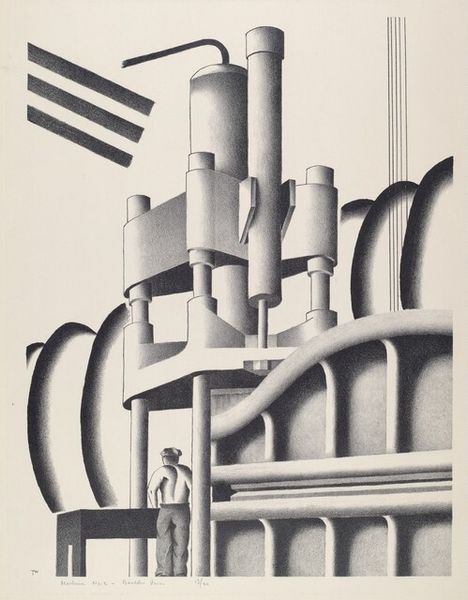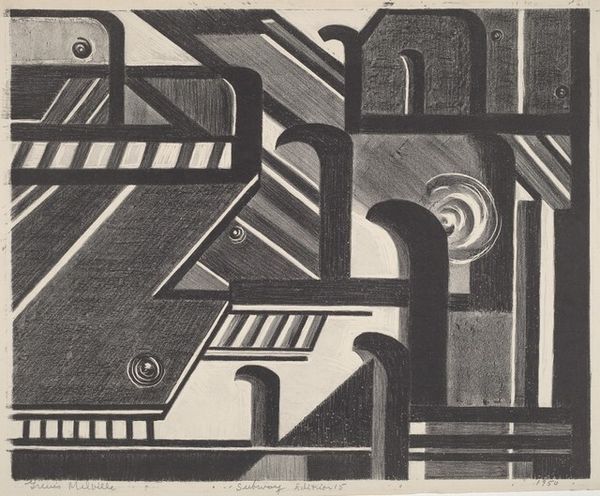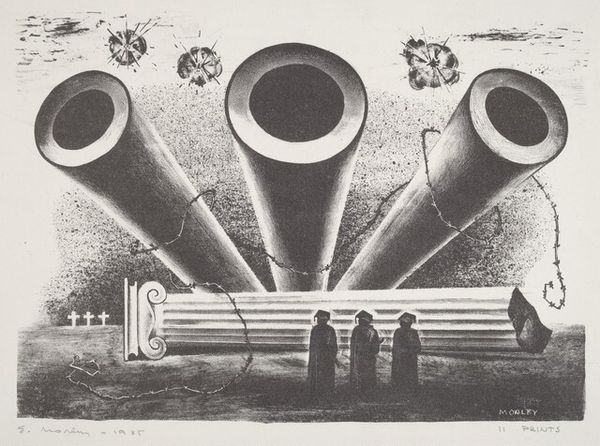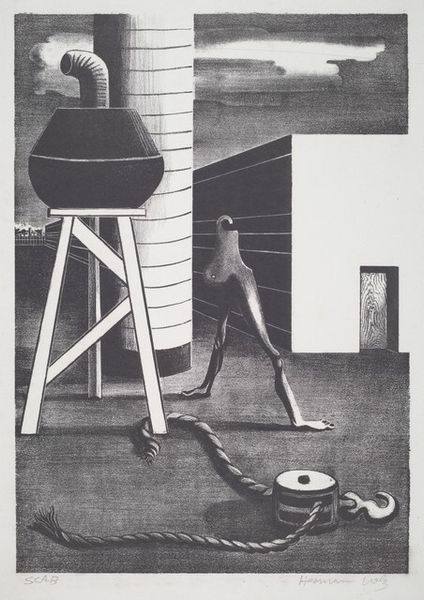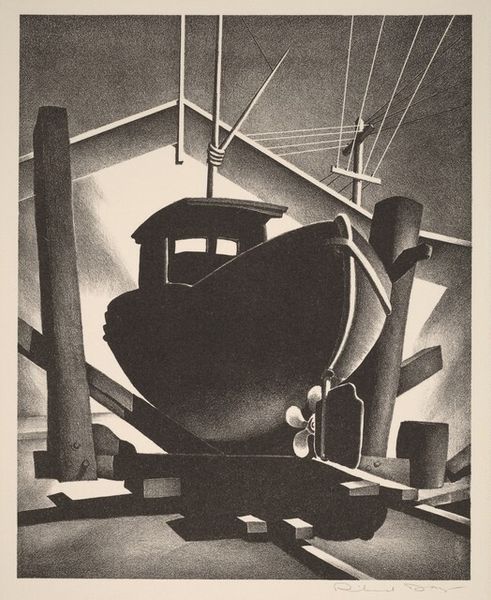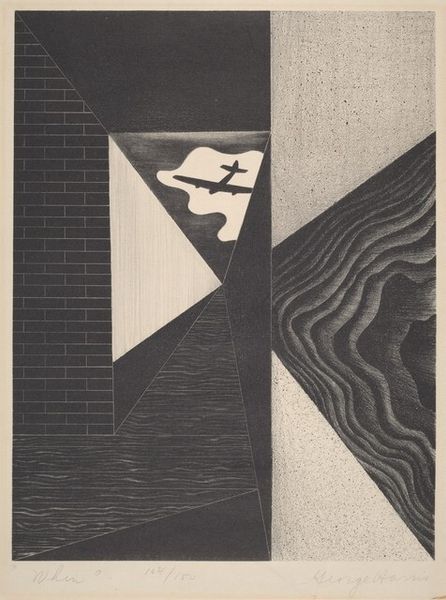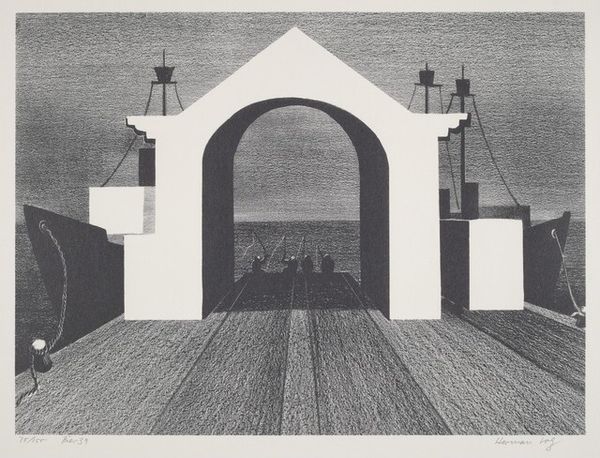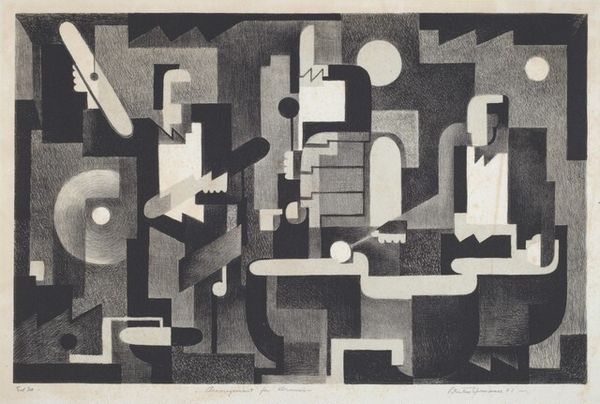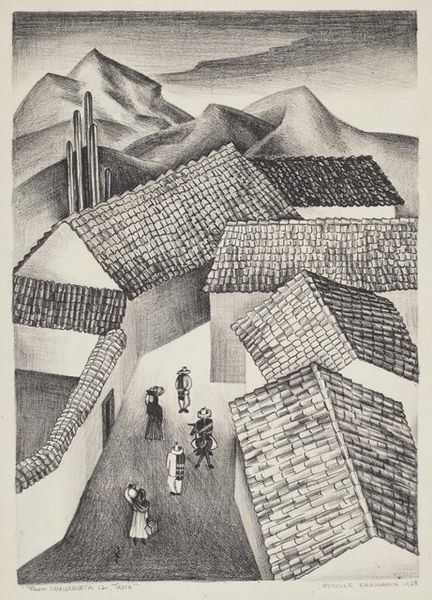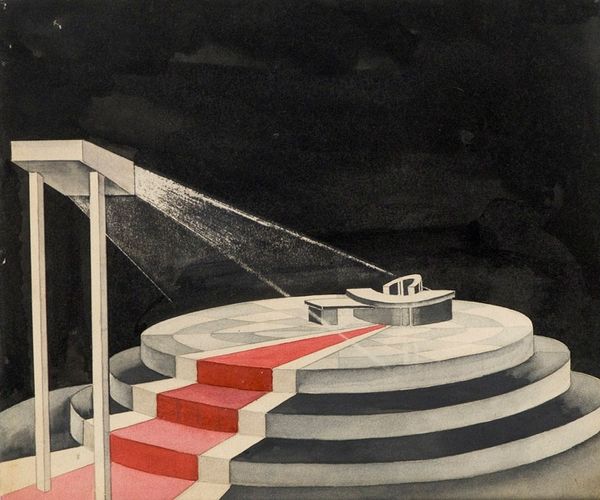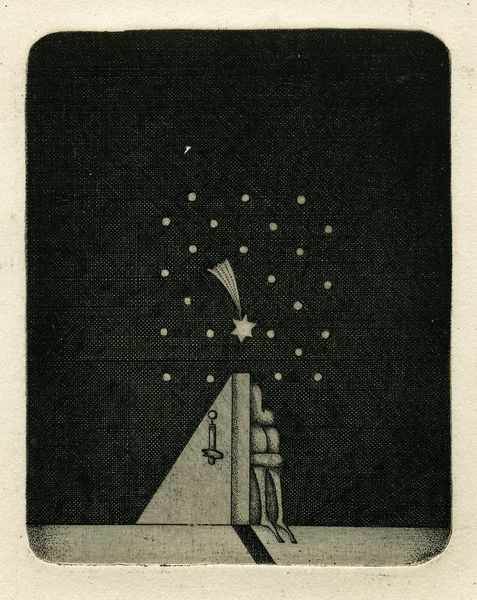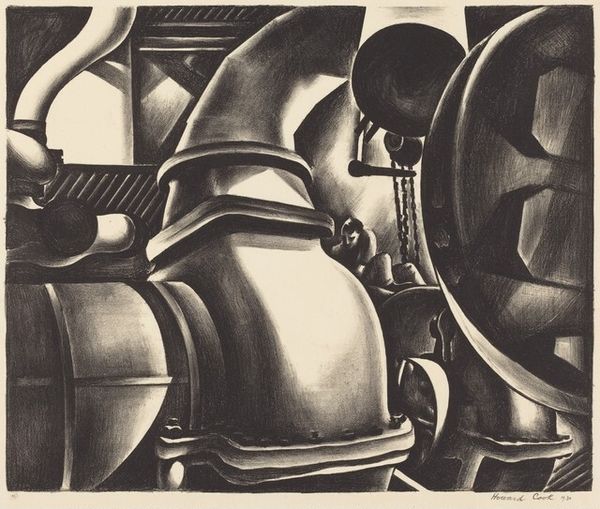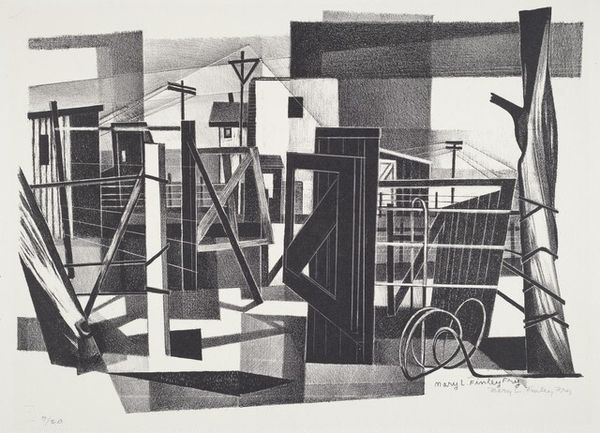
# print
#
social-realism
#
form
#
geometric
#
abstraction
#
line
#
cityscape
#
modernism
Dimensions: image: 273 x 385 mm sheet: 301 x 483 mm
Copyright: National Gallery of Art: CC0 1.0
Curator: Herman Volz's 1937 print, "Industrialization", presents a stark vision of modernity. Editor: Immediately striking, isn’t it? That dramatic play of light and shadow creates such a somber, almost oppressive mood. Curator: Indeed. Consider the socio-political climate of the time. Volz, working within the Social Realist tradition, gives us rigid geometric forms alongside rows of seemingly interchangeable figures. I can’t help but consider the rise of totalitarianism. The stark uniformity speaks volumes about control and the erasure of individuality within these systems. Editor: Absolutely, the repetitive forms speak volumes. It’s hard not to think of the materials: ink on paper, reproduced in multiples, emphasizing the very processes of mass production that the artwork depicts and critiques. Curator: Let's unpack the iconography. What do we make of the pipeline snaking overhead? It resembles an umbilical cord feeding into a network. I believe this illustrates the dehumanizing effect that reliance on such resources and processes had in post-Depression society, particularly in urban and industrial environments. Editor: I’m intrigued by the placement of those figures. They almost look as if they’re part of the machinery itself, extensions of the factory, and they lack any personal traits to note who they are or the jobs they have. Curator: And Volz positions them alongside this phallic imagery to make further connection to what they provide and consume. Their purpose feels solely to enable the industrial body, furthering the goals of state power with them getting nothing. Editor: Well, I see "Industrialization" as a commentary on the materials and their use to showcase how humans work within those material conditions. But both interpretations only amplify how it continues to resonate even now. Curator: I agree. Volz’s ability to capture that moment in history is haunting, serving as a visual reminder of the sacrifices involved in societal "progress." Editor: And reminding us of the enduring connections between making art, using material, and portraying humans. A dark perspective of what industrial processes do and consume.
Comments
No comments
Be the first to comment and join the conversation on the ultimate creative platform.
